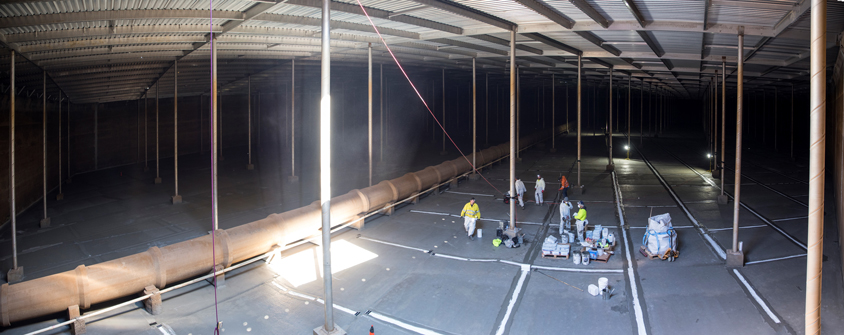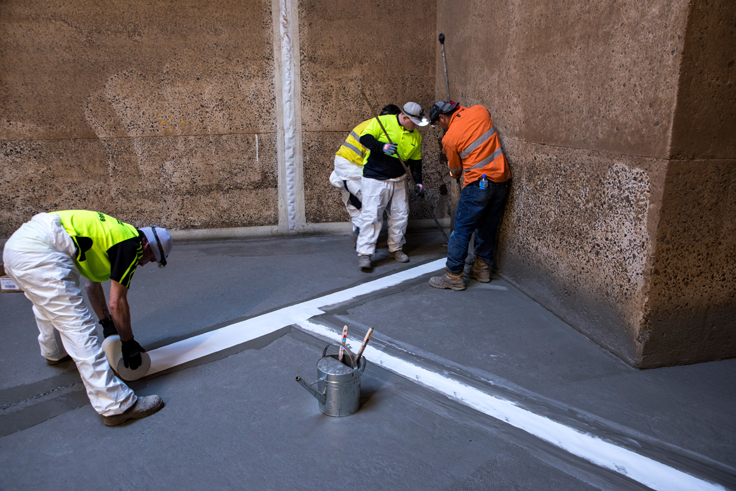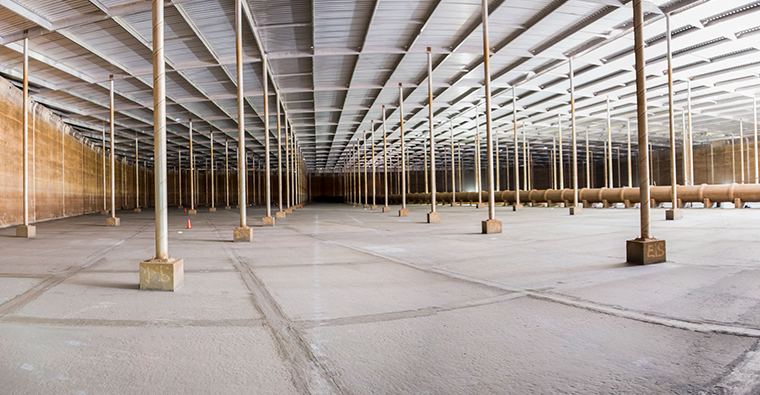A major floor rehabilitation project has been carried out at an 86ML potable water reservoir in Australia. Over 73 tonnes of Intercrete® 4841 coating was delivered by air freight from the UK to Sydney for the refurbishment of Black Hill Reservoir in the Newcastle region of Australia.
Formerly known as Cementitious Coating 851, Intercrete 4841 is now part of the International brand of AkzoNobel following the acquisition of Flexcrete Technologies Ltd in 2017. Intercrete 4841 – a two-component, waterborne, cementitious modified polymer coating approved for use in public water supplies – was specified in combination with Intercrete 4872 waterproof reinforcing tape, formerly known as Cemprotec 2000-S. Intercrete materials were applied by specialist applicator McElligott Partners.
Originally known as Stoney Pinch Reservoir, the structure is significant as it was one of the major mid-twentieth century expansions of water storage for Newcastle, the second most populated area in the Australian state of New South Wales. Brought into service in 1941, Black Hill Reservoir has a gravity mass concrete wall structure with an unreinforced concrete floor founded on rock. Located in remote bushland, the surrounding land is used for coal mining and access to the site is only via mine haul roads and gravel tracks. Over the years, there has been significant damage to the reservoir due to local mining activity.
The reservoir is owned and managed by Hunter Water Corporation, a state-owned organization which provides water, wastewater and storm water services for over half a million people in the lower Hunter region. Hunter Water’s area of operation covers some 5,366 square kilometres and incorporates six local government areas across a diversified landscape encompassing the vineyard and farming regions of Cessnock, Maitland and Dungog, the expanding areas of Newcastle and Lake Macquarie and the tourism peninsula of Port Stephens. Hunter Water’s operations are regulated by the New South Wales Government through a number of regulatory requirements including Environmental Protection Licenses and an Operating License which specifies water quality and environmental regulations.
 Black Hill Reservoir is an octagonal shape with a floor surface area of 11,000m², a major axis length of 135m, a minor axis length of 90m and a total perimeter of 410m. The concrete floor consists of staggered rectangular 3.6m x 7.2m concrete slabs with a thickness of 230mm. A toe slab extends around the perimeter of the floor approximately 600mm out from the wall. The joints between the concrete slabs were originally ‘V Shaped’ around 50mm wide and 80mm deep, filled with a bitumen sealant. The total length of floor joints is over 5,000m in length.
Black Hill Reservoir is an octagonal shape with a floor surface area of 11,000m², a major axis length of 135m, a minor axis length of 90m and a total perimeter of 410m. The concrete floor consists of staggered rectangular 3.6m x 7.2m concrete slabs with a thickness of 230mm. A toe slab extends around the perimeter of the floor approximately 600mm out from the wall. The joints between the concrete slabs were originally ‘V Shaped’ around 50mm wide and 80mm deep, filled with a bitumen sealant. The total length of floor joints is over 5,000m in length.
The concrete floor slabs were in reasonable condition but the majority exhibited a full width crack along the minor axis in line with the joints of the adjacent slabs. There were also minor cracks, spalling and defects in the 600mm toe slab. Surveys carried out several years earlier discovered minor vertical movement in the floor of up to 5mm, between emptying and filling the reservoir. The reservoir is periodically cleaned to remove accumulated sediment and maintain reservoir hygiene. This is typically undertaken using a squeegee attached to a rubber tracked excavator, in combination with high pressure water blasting.
 The specification demanded that the sealing system must have a 20-year minimum design life and be certified for contact with potable water to the Australian standard AS/NZS 4020. It was also important that the sealing system was flexible enough to accommodate movement of the wall and floor slabs and stresses associated with the ongoing use of the site, including daily partial depletion and filling and periodic emptying for maintenance.
The specification demanded that the sealing system must have a 20-year minimum design life and be certified for contact with potable water to the Australian standard AS/NZS 4020. It was also important that the sealing system was flexible enough to accommodate movement of the wall and floor slabs and stresses associated with the ongoing use of the site, including daily partial depletion and filling and periodic emptying for maintenance.
Following assessment of a number of different products and as a result of an extensive tender process, Intercrete products were chosen on the basis of their international track record of successful use in potable water facilities and the ability of Intercrete 4841 to meet the client brief.
Intercrete 4841 was first introduced back in 1985 and at the time it took the technology of polymer modified waterproofing slurries to new levels of performance. It still remains one of the best performing products available for structural waterproofing, and is widely adopted for both water and wastewater installations. The formulation is enhanced with microsilica inclusion which reacts with lime to form insoluble hydrates, thereby protecting concrete from leaching and subsequent erosion in demanding service conditions.
Client
Hunter Water Corporation
Contractor
McElligott Partners


